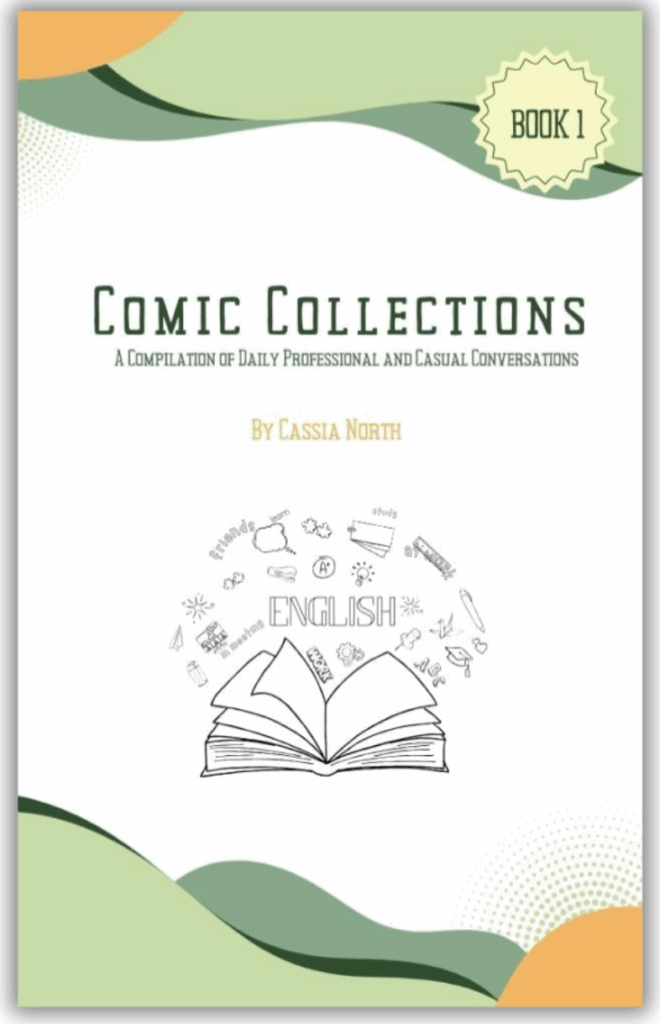
English Blogs
"Let's Learn, Explore, and Connect to the World"

Present Simple Tense 6
- Tokita Akira
- Basic English Grammar Blog

VI. Expanding Your Practice with the Present Simple Tense
To truly master the present simple tense, it is crucial to engage in varied and consistent practice. Here are some strategies and resources to help you expand your practice and reinforce your understanding of this fundamental tense.
Interactive Exercises and Activities
 Daily Journaling: Start a daily journal where you write about your day, your routines, and observations. This practice will help reinforce the use of the present simple in describing habitual actions and facts.
Daily Journaling: Start a daily journal where you write about your day, your routines, and observations. This practice will help reinforce the use of the present simple in describing habitual actions and facts.
 Role-playing Scenarios: Engage in role-playing activities with friends or language partners. Create scenarios where you can use the present simple, such as simulating a teacher explaining a concept or a tour guide describing historical places.
Role-playing Scenarios: Engage in role-playing activities with friends or language partners. Create scenarios where you can use the present simple, such as simulating a teacher explaining a concept or a tour guide describing historical places.
 Online Quizzes and Exercises: Utilize online resources that offer quizzes and exercises focused on the present simple tense. These interactive tools provide immediate feedback, helping you learn from mistakes and improve.
Online Quizzes and Exercises: Utilize online resources that offer quizzes and exercises focused on the present simple tense. These interactive tools provide immediate feedback, helping you learn from mistakes and improve.
Practical Application in Daily Life
 Conversations: Try to consciously use the present simple in daily conversations, especially when talking about routines, habits, or general truths.
Conversations: Try to consciously use the present simple in daily conversations, especially when talking about routines, habits, or general truths.
 Listening and Mimicking: Listen to native speakers in movies, TV shows, or podcasts, and mimic their use of the present simple. This practice helps in understanding the context in which this tense is used.
Listening and Mimicking: Listen to native speakers in movies, TV shows, or podcasts, and mimic their use of the present simple. This practice helps in understanding the context in which this tense is used.
 Reading and Analysing: Regularly read English newspapers, magazines, or books, and pay special attention to the use of the present simple tense. Analyzing how it’s used in different contexts can deepen your understanding.
Reading and Analysing: Regularly read English newspapers, magazines, or books, and pay special attention to the use of the present simple tense. Analyzing how it’s used in different contexts can deepen your understanding.
Conclusion

Expanding your practice in using the present simple tense is essential for achieving fluency in English. Through a combination of exercises, resources, and practical application, you can enhance your grasp of this fundamental aspect of English grammar. Remember, consistent practice and exposure are key to mastering the present simple tense.
Latest Blogs

Present Simple Tense 1
English Blogs “Let’s Learn, Explore, and Connect to the World” Present Simple Tense 1 I. Introduction to the Present Simple Tense in English Mastering the

Present Simple Tense 2
English Blogs “Let’s Learn, Explore, and Connect to the World” Present Simple Tense 2 II. Understanding the Present Simple Tense Definition and Structure At its
Reading comprehension quiz
Check out our books and more!

Comic Collections : A Compilation of Daily Professional and Casual Conversations (Book 2)
Master conversation with ‘Comic Collections’ (Book 2) by Cassia North. A fun, insightful guide to professional and casual communication, packed with engaging comics and practical tips for every interaction!
Check out our Blogs!
Read our everyday blogs and gain new knowledge, skills, and inspiration to support your learning journey here in SEKAEL.


Explore Mental Health Blogs to gain insights and tips on self-care, emotional balance, and personal well-being.







 While the present simple tense might seem straightforward, effectively using it and avoiding common pitfalls can be challenging. Here, we provide practical tips for proper usage and highlight some typical mistakes learners often make.
While the present simple tense might seem straightforward, effectively using it and avoiding common pitfalls can be challenging. Here, we provide practical tips for proper usage and highlight some typical mistakes learners often make.



 Understanding when and how to use the present simple tense is key to mastering English grammar. By being mindful of common errors and practicing regularly, you can enhance your English communication skills significantly. Keep these tips in mind as you continue to explore and use the English language in your daily life.
Understanding when and how to use the present simple tense is key to mastering English grammar. By being mindful of common errors and practicing regularly, you can enhance your English communication skills significantly. Keep these tips in mind as you continue to explore and use the English language in your daily life.





 Mastering the art of forming questions and negatives is a crucial aspect of using the present simple tense effectively. This section will guide you through the rules and nuances of constructing these types of sentences.
Mastering the art of forming questions and negatives is a crucial aspect of using the present simple tense effectively. This section will guide you through the rules and nuances of constructing these types of sentences.






















 The
The 






 One crucial aspect of the present simple tense is subject-verb agreement. This rule states that when the subject is a third-person singular (he, she, it), the verb typically ends in -s or -es. This rule is one of the key differences that sets English apart from many Asian languages, which often do not have such distinctions in verb forms based on the subject.
One crucial aspect of the present simple tense is subject-verb agreement. This rule states that when the subject is a third-person singular (he, she, it), the verb typically ends in -s or -es. This rule is one of the key differences that sets English apart from many Asian languages, which often do not have such distinctions in verb forms based on the subject.




 The present simple tense is more than just a grammatical rule; it is a key to unlocking the richness of the English language. Its simplicity allows for versatility in expression, from describing daily routines to stating universal facts. This tense is ubiquitous, appearing in conversations, written narratives, news reports, and instructions, making it one of the first aspects of English grammar that beginners encounter and must master.
The present simple tense is more than just a grammatical rule; it is a key to unlocking the richness of the English language. Its simplicity allows for versatility in expression, from describing daily routines to stating universal facts. This tense is ubiquitous, appearing in conversations, written narratives, news reports, and instructions, making it one of the first aspects of English grammar that beginners encounter and must master. This article aims to demystify the present simple tense, providing learners with a comprehensive understanding of its structure, usage, and application. By delving into its various aspects, from forming affirmative sentences to asking questions and making negatives, we will explore how this tense shapes the foundation of English communication. Through practical examples and tips, we aim to equip learners with the knowledge and confidence to use the present simple tense effectively, paving the way for fluency in English.
This article aims to demystify the present simple tense, providing learners with a comprehensive understanding of its structure, usage, and application. By delving into its various aspects, from forming affirmative sentences to asking questions and making negatives, we will explore how this tense shapes the foundation of English communication. Through practical examples and tips, we aim to equip learners with the knowledge and confidence to use the present simple tense effectively, paving the way for fluency in English.